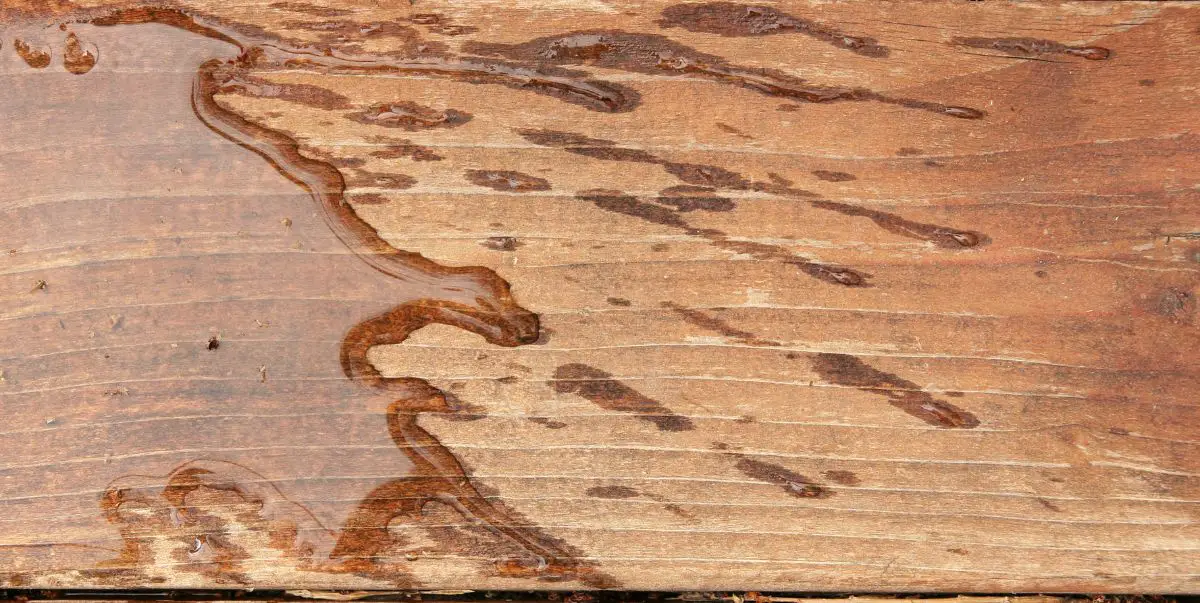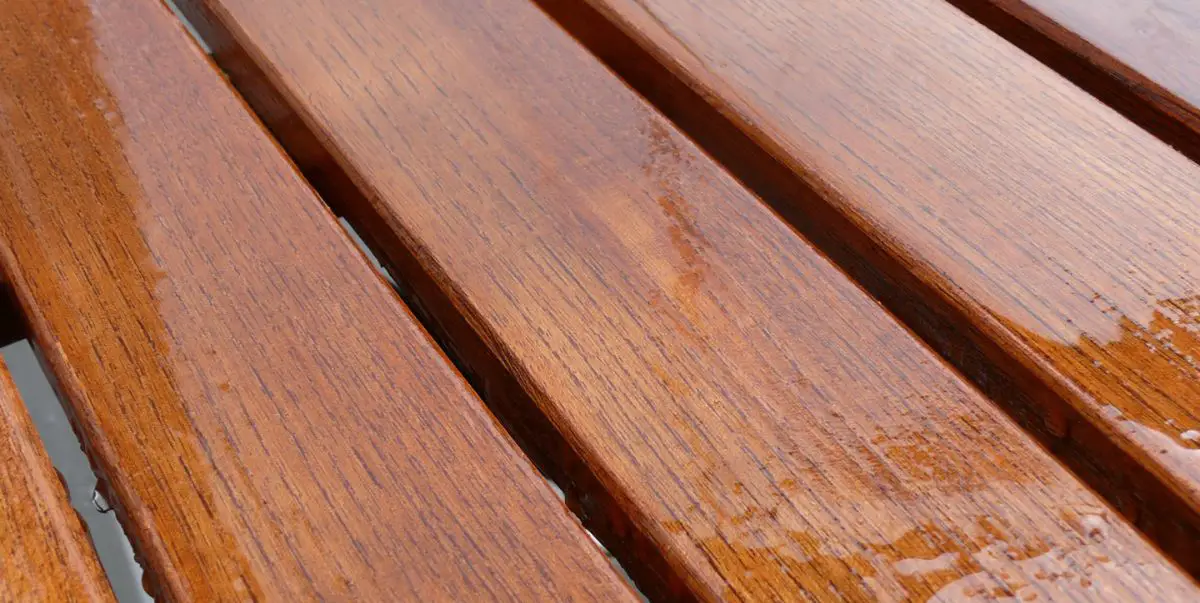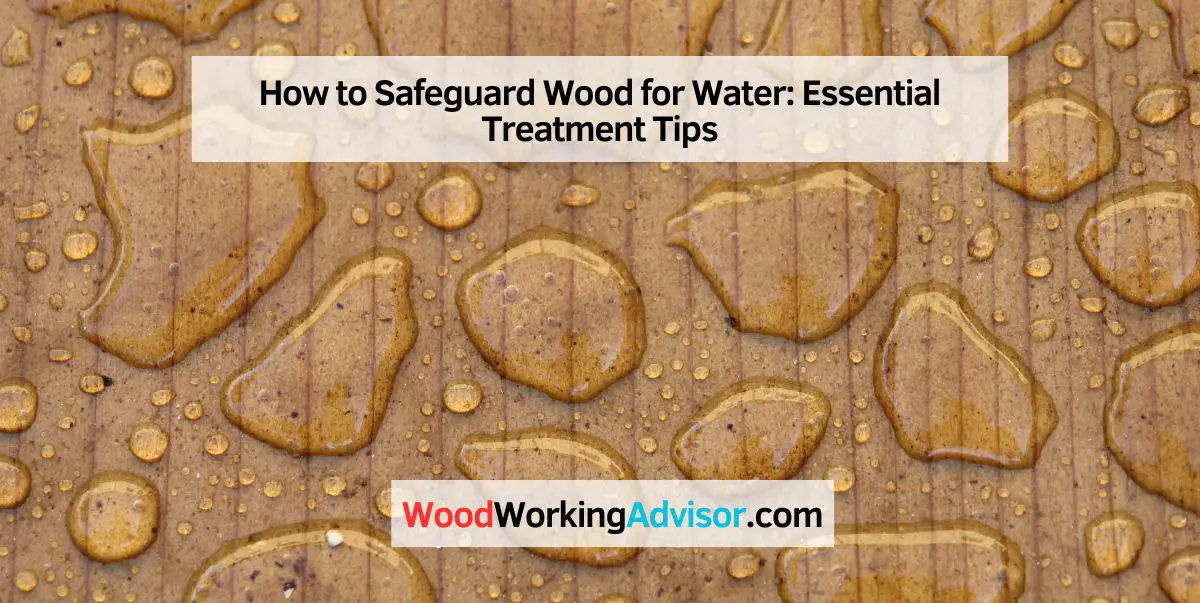To treat wood for water, apply a waterproof sealant or varnish on the surface of the wood. This will help protect it from water damage and prevent moisture absorption, extending the wood’s lifespan.
Wood is a versatile and commonly used building material with numerous applications. However, its susceptibility to water damage is a concern, especially if it’s exposed to moisture for extended periods. Water can cause wood to rot, warp, or develop mold, compromising its structural integrity.
To combat this issue, it’s essential to treat wood for water. We will explore effective methods for treating wood, such as applying sealants, varnishes, and other protective coatings. By implementing these treatments, you can safeguard the wood against water damage, ensuring its durability and prolonging its lifespan. Let’s dive into the various ways you can treat wood for water.
Understanding Wood Degradation
Wood is a versatile material used in various applications, but it is susceptible to degradation when exposed to water. Understanding the process of wood decay is crucial to effectively treat wood for water. In this article, we will explore the causes of wood decay and the effects of water on wood.
Causes Of Wood Decay
Wood decay can occur due to several factors, each contributing to the gradual deterioration of its structure. Here are some common causes:
- Moisture: Excessive moisture is a primary catalyst for wood decay. When wood absorbs water, it creates an environment conducive to fungal growth, ultimately leading to decay.
- Fungi: Fungi thrive in damp conditions and can penetrate the wood’s surface, breaking down its fibers and compromising its integrity.
- Insects: Certain wood-boring insects, such as termites and beetles, can cause significant damage by tunneling through the wood, creating entry points for moisture and further accelerating decay.
- Temperature fluctuations: Extreme temperature variations can cause wood to expand and contract, leading to cracks and gaps where water can seep in.
- Chemical reactions: Exposure to chemicals, such as acids or alkalis, can weaken wood and make it more susceptible to decay over time.
Effects Of Water On Wood
Water has a profound impact on the health and structural integrity of wood. Here are the key effects water can have:
- Swelling: When wood absorbs water, it swells, leading to dimensional changes. This swelling can result in warping, buckling, or cupping of the wood.
- Discoloration: Prolonged exposure to water can cause wood to develop unsightly stains or discoloration, often indicating decay or mold growth.
- Rot: Excess moisture creates an optimal environment for wood-rotting fungi to thrive. These fungi break down the wood’s cellulose, resulting in rot, which weakens the wood structure.
- Loss of strength: As wood deteriorates due to water exposure, it loses its strength and load-bearing capacity, compromising the stability of structures.
Understanding the causes of wood decay and the effects of water on wood is crucial for implementing effective treatment methods. In the subsequent sections, we will delve into various techniques and products to treat wood to prevent or mitigate water-related degradation.

Choosing The Right Treatment Method
When it comes to treating wood for water, choosing the right treatment method is crucial to ensure the longevity and durability of the wood. While there are several treatment methods available, it’s important to assess the wood type and consider environmental factors to determine the most suitable option.
Assessing Wood Type
Before deciding on the treatment method, it’s essential to assess the type of wood you are working with. Different wood species have varying levels of natural resistance to water. Some woods, such as cedar and teak, have natural oils that make them more resistant to water damage, while others may require additional protection.
To determine the type of wood you are dealing with, check its hardness, grain pattern, and color. Hardwoods like oak and mahogany are generally more water-resistant, while softwoods like pine and fir are more susceptible to moisture. By understanding the characteristics of your wood, you can choose a treatment method that enhances its natural resistance or provides the necessary protection.
Considering Environmental Factors
When treating wood for water, it’s important to consider the environmental factors that the wood will be exposed to. Factors like humidity, rainfall, and sunlight can significantly affect the wood’s durability and resistance to water damage.
High humidity levels can cause wood to absorb moisture, leading to swelling, warping, and even rot. In areas with heavy rainfall, the wood is constantly exposed to water, increasing the risk of decay and mold growth. Additionally, prolonged exposure to direct sunlight can cause the wood to dry out and lose its natural oils, making it more vulnerable to water damage.
By carefully considering these environmental factors, you can choose a treatment method that provides the necessary protection against water damage in your specific location. For example, in high-humidity areas, choosing a treatment that includes moisture barriers or sealants can help prevent excessive moisture absorption.
Summary
When treating wood for water, it’s crucial to choose the right treatment method based on the wood type and environmental factors. Assessing the wood type allows you to understand its natural resistance and determine if additional protection is needed. Considering environmental factors like humidity, rainfall, and sunlight helps select a treatment that addresses specific vulnerabilities and provides optimal durability.
Common Wood Preservation Techniques
Preserving wood against water damage is crucial to ensure its longevity. There are various wood preservation techniques that are commonly used to protect wood from water damage. These techniques are essential for maintaining the structural integrity and aesthetic appeal of wooden structures.
Pressure Treatment
Pressure treatment is a widely used method for preventing wood decay. In this process, the wood is placed in a pressure chamber, where a preservative solution is forced into the wood fibers under high pressure. This method ensures that the preservative penetrates deep into the wood, providing long-lasting protection against water and decay.
Chemical Treatments
Chemical treatments involve the application of various preservatives such as creosote, copper azole, or chromated copper arsenate. These chemicals are applied to the wood surface to create a barrier against water and pests. The type of preservative used depends on the specific requirements of the wood and the environment in which it will be used.
Best Practices For Long-term Protection
When it comes to preserving the longevity of wood exposed to water, following best practices for long-term protection is essential. By implementing regular inspections and proper maintenance strategies, you can ensure that your treated wood remains in optimal condition and continues to withstand the damaging effects of water. Let’s dive deeper into these 2 key aspects:
Regular Inspections
Regular inspections serve as the first line of defense in identifying any potential issues with your wood treatment. By conducting routine inspections, you can catch any signs of water damage or deterioration early on, preventing more severe problems down the line.
During your inspections, look out for the following:
- Cracks or splits in the wood surface
- Discoloration or staining
- Soft or spongy areas indicate rot
- Loose or missing fasteners
Make sure to inspect all areas of the treated wood, including the underside and hard-to-reach corners. By doing so, you can quickly identify and address any potential issues before they worsen.
If you notice any concerns during your inspection, take immediate action. Repair or replace damaged portions, treat any exposed areas, and consider applying additional protective coatings as needed.
Proper Maintenance Strategies
Once you have completed your inspections, it’s time to focus on implementing proper maintenance strategies. This ensures that your wood treatment remains effective and continues to provide long-lasting protection against water damage.
Here are some recommended maintenance strategies:
- Regularly clean the wood surface to remove dirt, grime, and mildew buildup, as these can compromise the treatment.
- Apply a suitable waterproof sealant or wood preservative to enhance the water resistance of the treatment.
- Avoid excessive exposure to water by preventing standing water accumulation on the wood surface.
- Retreat or reinforce the treatment periodically, especially in high-traffic areas or areas that are more susceptible to water exposure.
By adhering to these maintenance strategies, you can prolong the life of your wood treatment and ensure that it continues to withstand the test of time.
Environmental Impact And Sustainability
When it comes to treating wood for water exposure, it is important to consider the environmental impact and promote sustainable practices. Wood treatments often involve chemicals that can have negative consequences on the environment. However, there are eco-friendly treatment options available that can minimize harm while preserving the longevity of the wood. Similarly, responsible disposal practices play a crucial role in reducing the impact of wood treatments on the environment. Let’s explore these aspects in more detail.
Eco-friendly Treatment Options
When treating wood for water, you have the opportunity to choose environmentally friendly options that have a minimal impact on the planet. These eco-friendly treatments are designed to protect the wood while reducing the use of harmful chemicals. Some of the sustainable treatment options include:
- Bio-based treatments: These treatments utilize natural substances, such as oils, waxes, and plant extracts, to create a protective barrier without the use of toxic chemicals. They are biodegradable and pose less risk to human health and the environment.
- Water-based treatments: These treatments use water as the primary carrier for preservatives and other protective substances. Water-based treatments have lower VOC (Volatile Organic Compounds) emissions compared to solvent-based alternatives, making them a greener option.
- Heat treatment: This process involves subjecting the wood to high temperatures, and physically altering its structure to make it more resistant to water absorption. Heat treatment is chemical-free and can enhance the wood’s natural resistance while providing excellent durability.
By choosing eco-friendly treatment options, you not only protect the environment but also contribute to the overall sustainability of the wood industry.
Responsible Disposal Practices
Wood treatments should not end with the application process; responsible disposal practices are equally important to reduce the overall environmental impact. Proper disposal ensures that treated wood does not contaminate water sources, soil, or air. Here are some responsible disposal practices to consider:
- Recycling: Whenever possible, recycle the treated wood. Some recycling facilities specialize in the processing of treated wood, which can then be repurposed for other applications.
- Landfill disposal: If recycling is not feasible, dispose of the treated wood in designated landfill facilities. Landfills are equipped to handle and contain potentially harmful materials properly.
- Local regulations: Familiarize yourself with local regulations regarding the disposal of treated wood. Some areas may have specific guidelines or restrictions in place to protect the environment.
By following responsible disposal practices, you contribute to a cleaner and healthier environment, ensuring that treated wood does not pose a threat to ecosystems or human well-being.

Frequently Asked Questions Of How To Treat Wood For Water
How Do You Treat Wood To Make It Waterproof?
To make wood waterproof, use a waterproof sealant or coating. Apply it to the surface of the wood to repel water and prevent damage. Regular reapplication is needed to maintain waterproofing.
Can You Make Wood 100% Waterproof?
Yes, it is possible to make wood 100% waterproof by applying waterproof coatings or sealants. These products create a barrier that prevents water from penetrating the wood’s surface, making it resistant to moisture damage. Additionally, proper maintenance and regular reapplications can help maintain the wood’s waterproof characteristics.
What Is The Best Waterproofing For Wood?
The best waterproofing for wood is a product that contains a blend of water-repellent substances and sealants. Select a waterproofing solution that is specifically designed for wood surfaces, as it will provide the best protection against moisture, rot, and decay.
Does Staining Wood Make It Waterproof?
Yes, staining wood can make it somewhat waterproof by repelling water and preventing it from soaking in. However, it does not make it completely waterproof and may require additional treatments for full protection.
Conclusion
Treating wood for water resistance is essential for its longevity and durability. By following the tips and methods outlined you can effectively protect your wood against moisture damage. Whether you choose to use sealants, oils, or specific treatments, taking the time to properly treat your wood will ensure its continued beauty and strength for years to come.


